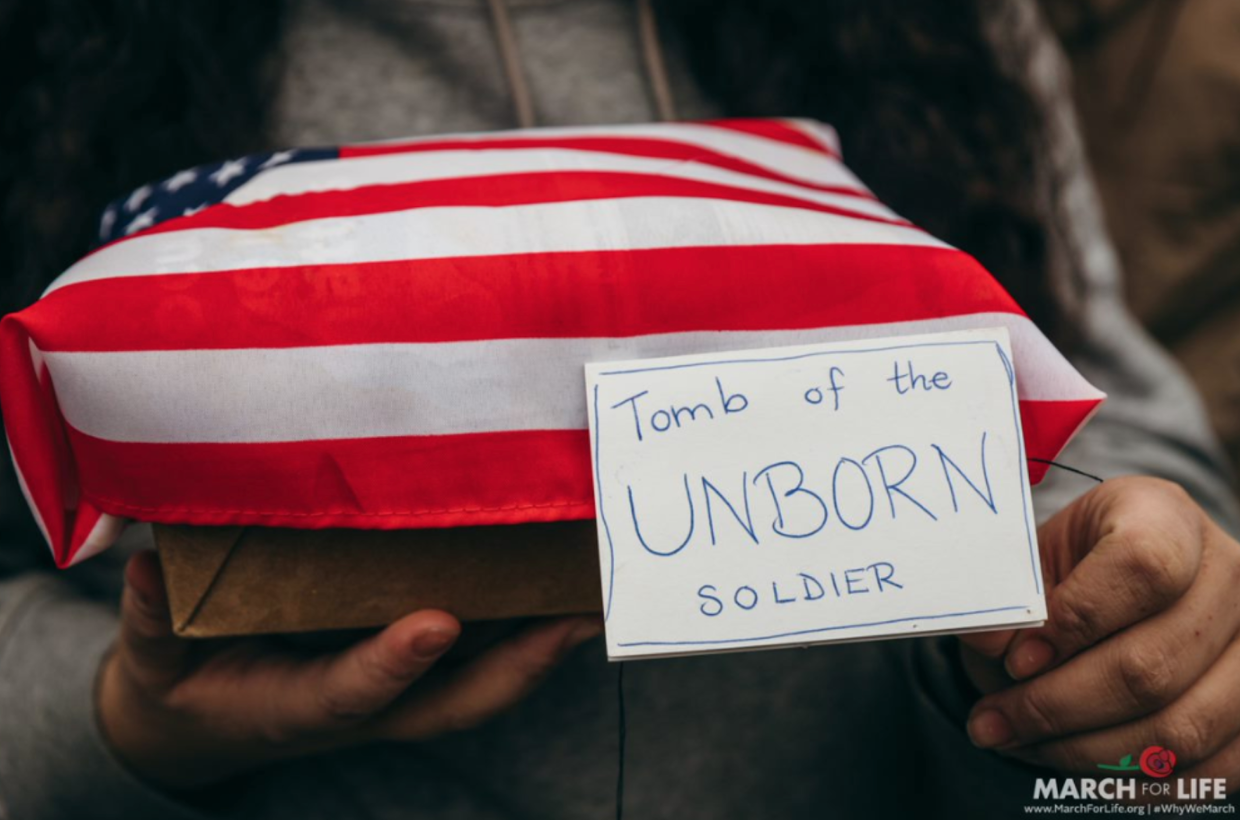Notes
Toxic Nationalism: The Tomb of the Unborn Soldier

Sometimes even the most spectacular failure can produce intriguing results.
In an attempt to rally followers for the pro-life cause, the Illinois Federation for Right to Life (IFRL) posted a bizarre image on Facebook. Titled “Tomb of the Unborn Soldier,” the image shows a person cradling a tiny coffin draped by a small American flag. The flag is folded in a way that refers to US military procedure for transporting bodies of the fallen.
If the IFRL hoped the symbolic power of military imagery would inspire pro-life sentiment, this image appears to have blundered that goal. Far from rallying the base, the vulgar image sparked a discussion about how nationalism has become a toxic and overzealous ideology. On discussion hubs such as Reddit and Twitter — IFRL has since removed the post from its Facebook and Twitter feeds — voices from the left and right mocked the image almost immediately after it was posted, digging into the odd way it collapses life and death.
It is no surprise that this image traveled quickly across social media. Users often seek out and share images on social media, which means images travel faster and are more likely to go viral. Effective images usually grab attention and spur digital discussion. But sometimes odd and even less trafficked images — such as this one from IFRL — also can spawn critique and engagement.
“The Tomb of the Unborn Soldier” image reframes abortion as a dereliction of national service. Dramatic juxtaposition within the photograph reveals a deep contradiction at work in this pro-life vision of nationalism, while it also illustrates how nationalism has poisoned discussions of pro-life and pro-choice. In response, commenters have played up the manner in which this image contradicts the pro-life message. One person tweeted, for example, “[tear-choked] ‘now the foetus will never be Killed In Action.’” Another commenter wrote, “This innocent baby died to protect a mother’s life, instead of for a good reason: murdering brown people.”
The photograph is noteworthy not only because of the rhetorical failure of the original message. What also stands out is how the flag on a tiny coffin repackages the central claim of pro-natalism and puts it on public display: abortion is a social evil because it robs the nation of future soldiers. In this way, the image suggests that the pro-life movement and IFRL in particular encourage reproduction for the purposes of expendable death.
By wrapping the American flag around an “unborn soldier,” the fetal prop featured in the photo visualizes a pro-natalist ideology in which offspring serve a greater purpose: that of building the nation. In fact, a number of pro-natalist policies encourage reproduction along just these lines, such as the child tax credit or child care tax deductions. Historically, pro-natalist advocates have encouraged white women of means to procreate liberally. But they have discouraged poor women of color from doing so, and in some cases have even pushed for sterilization.
Pro-natalists emphasize the future potential of the fetus because, as researchers have argued, advances in representational technologies such as sonograms and ultrasounds — which allow the fetus to be represented visually — have helped to crystallize the figure of the future citizen. For pro-natalists, visualizing the fetus is a powerful strategy for imagining citizens as the embodiment of future solutions to national problems.
But responses to “The Tomb of the Unborn Soldier” turn this valorization of the future citizen on its head. As one commenter tweeted, “Assigned war criminal at birth.” Another wrote: “To think of all the innocent civilians who won’t be war crimed in the future smh.” Comments like these counter the future heroism of the fetus with the future war crimes of the imperialist soldier. These comments refigure the pro-natalist image as a cause of future failure instead of the solution. And while the image itself may have been circulated to reinforce the idea that abortion ruins military success, many responding to the image see in the miniature flag-covered casket a foreshadowing of fascist authoritarianism.
What proves most significant about this bizarre image, then, is not its failure to facilitate the cause for which it was intended. Instead, the photograph sparked a surge of engagement with the problems of pro-natalism and more. “The Tomb of the Unborn Soldier” shows how pro-life activism has been folded into the pro-natalist ideal of making conscripted childbirth the basis of national prosperity.
— Leslie Hahner | @TXRhetorician
Photo: Illinois Federation for Right to Life via Twitter Caption: A Facebook post from Illinois Federation for Right to Life in June.


Reactions
Comments Powered by Disqus